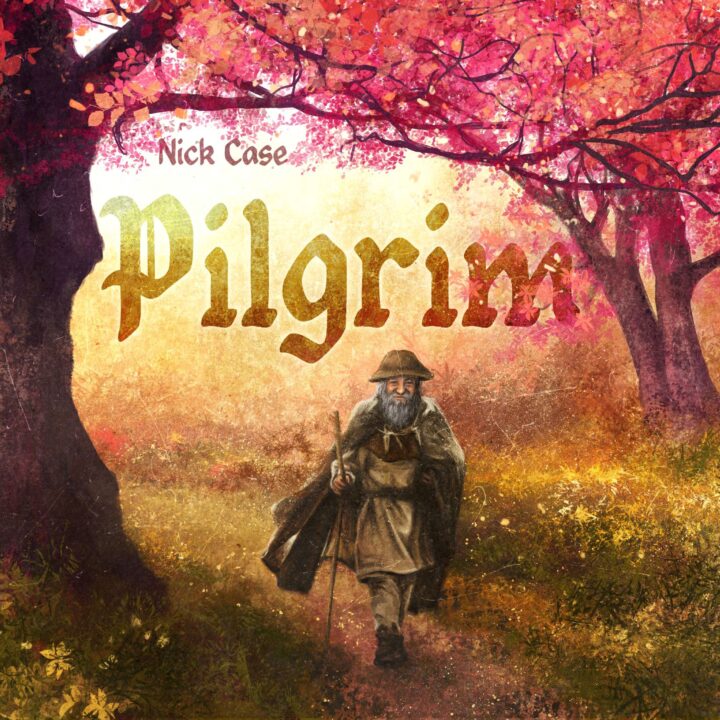Welcome to my review! If you’ve ever wondered what it’s like to herd monks and gather relics without leaving your living room, you’re in for a treat. After many nights of plotting, laughing, and arguing with friends over holy points (and, okay, some accidental monk sabotage), I’ve put Pilgrim to the test. So, is it a miracle on the table or is your money better spent on actual incense? Read on as I spill all the beans—both the fun ones and the awkward, what-were-they-thinking ones.
How It Plays
Setting Up
First, plop the board down in the middle of your table. Each player picks a color, grabs their monks, discs, and player board. Shuffle the cards (don’t drop them in your tea). Give everyone their starting resources. Set up the holy sites, place the relics, and argue over who sits closest to the snacks. You’re ready to begin!
Gameplay
Each round, you take turns choosing actions. You can send monks to distant holy sites, upgrade your player board, or build towers. Sometimes you’ll bump into other monks and have to decide—do you help or hinder them? Timing matters. There’s strategy here, so don’t just charge in like a sugar-rushed squirrel. Resource management and route planning are the name of the game, and you need to stay sharp to keep ahead of the holy herd.
Winning the Game
The game ends after a certain number of rounds, or when someone achieves a key pilgrimage milestone (trust me, you’ll know because they’ll start bragging). Tally up points for your holy work: visited sites, relics snatched, towers built, and cards collected. Whoever has the highest score is declared the most pious pilgrim—and if you lose, just mumble something about divine intervention and demand a rematch.
Want to know more? Read our extensive strategy guide for Pilgrim.
Player Interaction and Competition: Pilgrim’s Push and Pull
Let’s put it bluntly: in Pilgrim, you can’t just hide in a corner and hope for the best. The game makes you look at your friends, judge their moves, and occasionally ruin someone’s day (with a smile, of course). In my last game, my friend Dave actually blocked an entire route just to make me walk the long way round—he claimed it was strategic, but I know it was personal. There are lots of little ways to mess with people, and the tension? Let’s just say my palms were sweating the whole time.
Pilgrim is not one of those multiplayer solitaire games where everyone just sits counting beans in peace. You’ll compete for bonus tiles, block movement, and grab precious resources before others do. It’s competitive, but not in a flip-the-table, scream-at-your-brother way. More like a friendly nudge followed by a sheepish apology. This keeps the table lively and spirited, especially if you invite the right crowd.
Now, there are moments when interaction can feel a bit swingy. Sometimes you get outmaneuvered, and it’s out of your hands. But, most of the time, you have ways to strike back or adapt your plan. I’ve had rounds where my entire plan got derailed because someone spotted what I was up to. Is that annoying? Yes. But is it also hilarious? Also yes.
If you want a game where you stare at your own board in silence, Pilgrim isn’t it. If you want a little friendly chaos, you’ll love this one. Next up, I’ll finally spill the beans on how Pilgrim’s strategy stacks up against good old-fashioned luck. Trust me, you’ll want to stick around for this one!
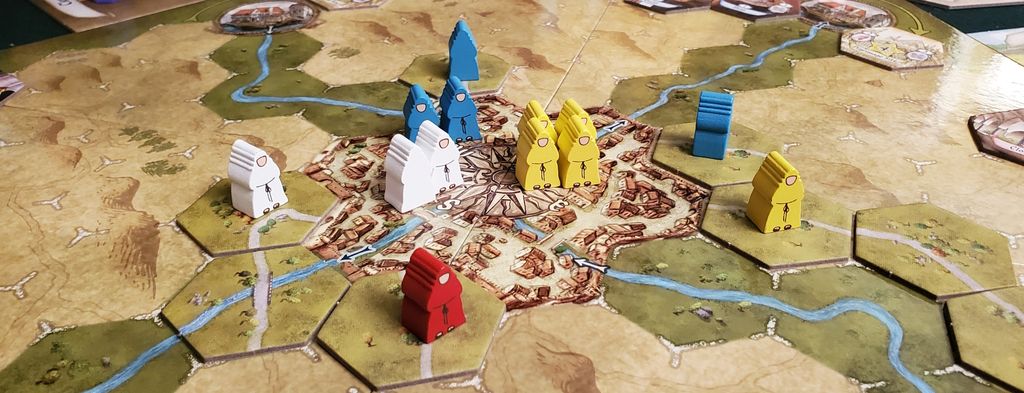
How Does Pilgrim Balance Strategy and Luck?
Alright, so here comes the million-monk question: is Pilgrim a game for planners, or is it for people who think rolling dice is an artform? I played Pilgrim with a group of my regular board game buddies, including my friend Mike, who has the uncanny luck of someone who eats rabbit feet for breakfast. Weirdly, Mike didn’t win this time. That’s because Pilgrim is all about strategy—and that makes me very happy.
In Pilgrim, luck mostly takes a backseat. The game puts the fate of your monastery squarely in your own hands. You need to plan your routes, build up your pilgrim network, and outmaneuver the other players on the board. There’s no dice-rolling chaos or wild card draws that flip the whole table over. You can study the map, watch your rivals, and actually predict outcomes. This means that careful planning and sneaky moves usually pay off, unless you do what I did once and forgot to count my resources. Spoiler: that hurt.
Sure, a tiny pinch of luck peeks in—sometimes the board state can change based on what other players do. But overall, in Pilgrim, the clever monks win the day, not the lucky ones. That’s the kind of balance that makes me want to come back for round two (or twelve). If you prefer games where you win because you outsmarted everyone, not because you found a four-leaf clover, this one’s worth a look.
Next up, prepare your eyeballs and sharpen your quills, because we’re talking about Pilgrim’s theme and if the artwork will make you want to chant in Latin.
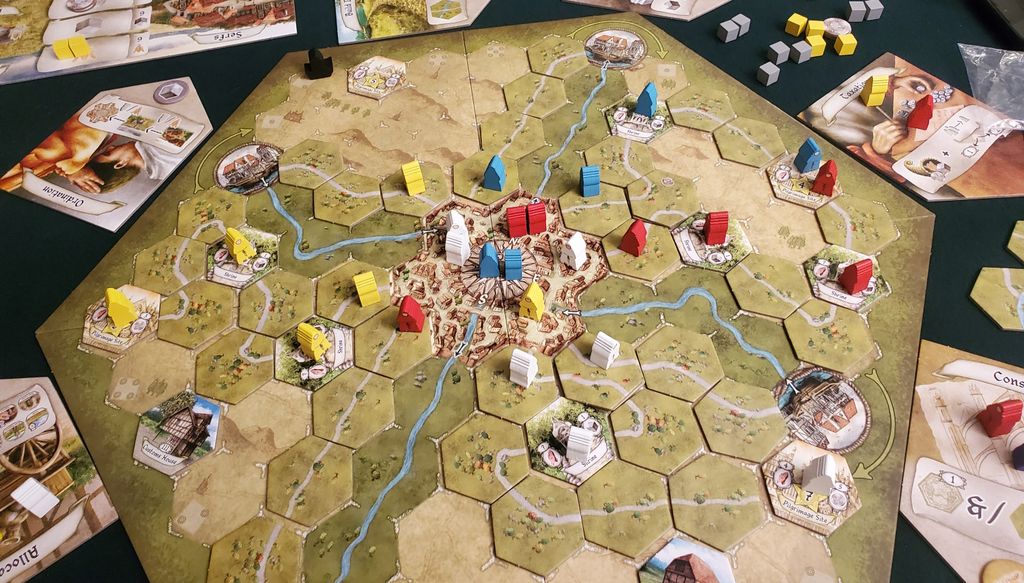
Theme and Artwork: A Holy Pilgrimage for Your Eyes
Let’s talk about Pilgrim’s theme and artwork, because, frankly, you can’t judge a scroll by its cover, but you sure can judge a board game by its box. Pilgrim goes for a medieval, spiritual vibe that’s so strong, I almost felt guilty for using dice on a Sunday. The theme ties into every part of the game. You’re not just moving pieces—you’re on a holy journey, building shrines, and gathering the faithful, like a monk with a suspiciously competitive streak.
The artwork in Pilgrim is, in one holy word, charming. The board is detailed and colorful, with scenic paths, small villages, and enough medieval touches to make you look for the nearest crusade. The cards are full of small, funny details. My friend Sam, who loves to nitpick, couldn’t find a single monk with modern sneakers, so that’s a win for historical accuracy. The shrines and tokens look good on the table and really help set the mood—though I did once mistake a shrine token for a cookie when I got too into the game.
One thing I love is how the art makes it easy to remember what things do. Everything’s clear, so you spend less time squinting and more time actually playing. The theme’s everywhere, from the player boards to the wooden bits, all pulling you deeper into the pilgrimage. If you’re a sucker for games where the visuals tell half the story, Pilgrim’s art and theme will win you over faster than you can say ‘amen’.
Alright, enough about holy eye-candy—next up, I’ll talk about how Pilgrim actually plays, and why rulebooks shouldn’t require prayers for patience.
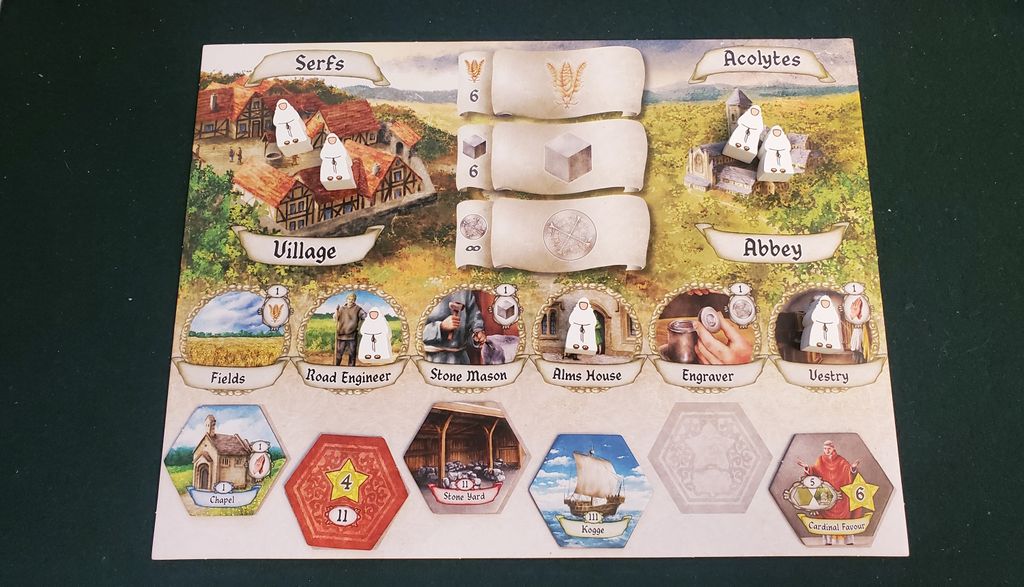
Game Flow & Rule Clarity in Pilgrim: Smooth Travels or Rocky Roads?
Let me tell you, my group loves a board game that keeps things moving. “Pilgrim” delivers on that front, mostly. Once you survive the first round of nervous rulebook reading, turns go by faster than a monk late for vespers. Everyone’s got something to do, even when it’s not their turn. That means you’re never stuck staring at a wall while cousin Ben debates arcane rules with your friend who insists he “remembers from last time.”
Speaking of rules, Pilgrim is—how do I put this?—not as easy to grasp as a loaf of bread, but not a 50-page epic either. The rulebook is packed tighter than a medieval monk’s satchel, so expect some page-flipping those first couple plays. There are a few weird little rules that had us frowning at each other, like how relic movement works or those odd exceptions to prayer actions. But once someone volunteers as the “rules monk” (that was me, and yes my robes were a bath towel), things speed up quickly. A player aid cheat-sheet would have been worth its weight in illuminated manuscripts, though!
Still, the actions are clear once you get going. You finish one loop around the board and suddenly the fog lifts: “Oh! That’s why you do that!” Planning turns feels satisfying, and downtime is blessedly short. Even our friend with the attention span of a squirrel stayed engaged.
So, do I recommend Pilgrim? Yes—if your group enjoys learning games and the journey of mastering a few quirks. Just bring an open mind, a patient heart, and maybe a towel-robe.
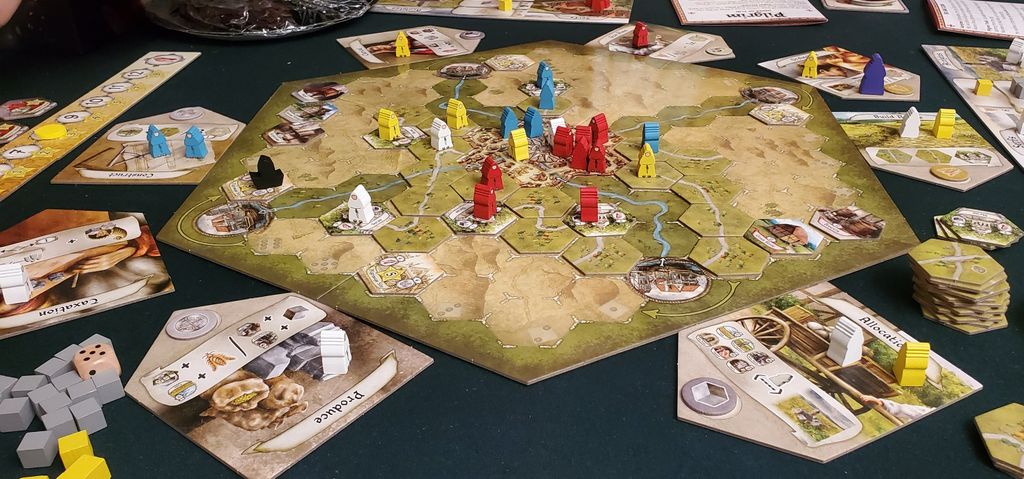
Conclusion
Well folks, that’s a wrap on my Pilgrim review! After a few rounds and more than one heated debate about the true meaning of penance, I can safely say Pilgrim delivers a solid strategy experience. The game rewards clever moves and long-term planning—random luck won’t save anyone from poor choices here. I enjoyed the medieval theme and the art, which gave it that proper “I really should feel guilty about stealing that relic” vibe.
Rules can be a bit overwhelming at first, and casual gamers might need a pep talk (and perhaps a snack) to get through the learning curve. But once you understand the flow, it runs smoothly and keeps everyone in the action. If you love games that make you think and aren’t afraid to plan a few moves ahead, Pilgrim is for you. If you want chaos and blind luck, maybe not so much. Either way, thanks for joining my journey—now, who’s up for a rematch where I hopefully don’t become the most notorious sinner again?

